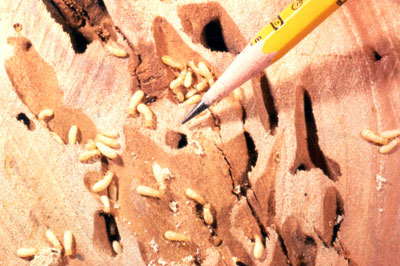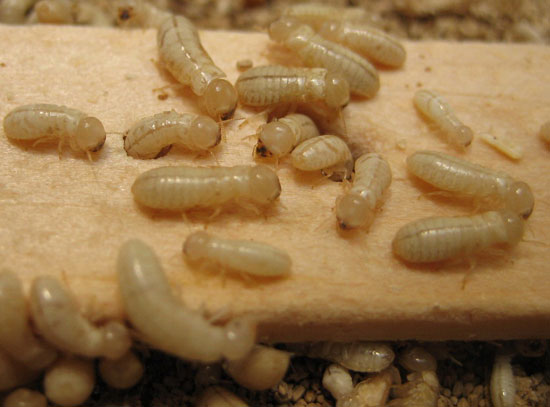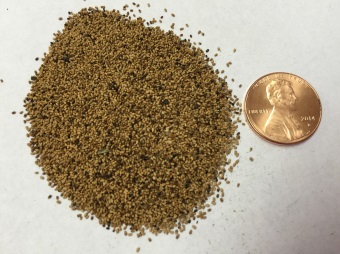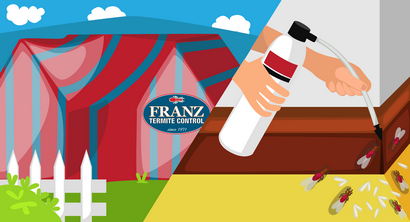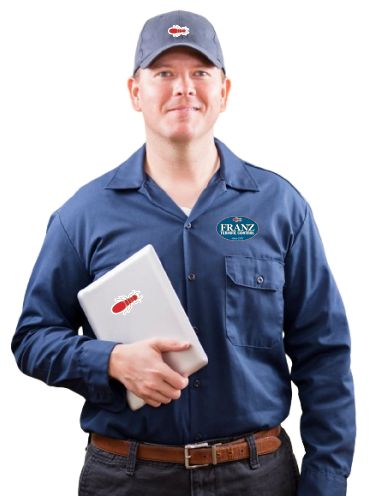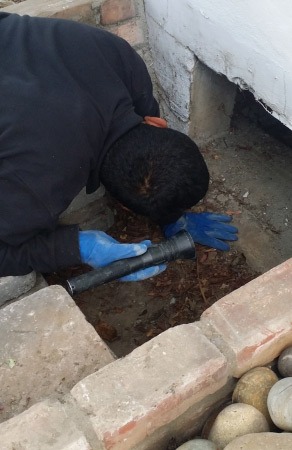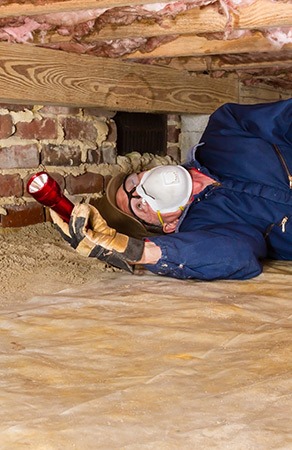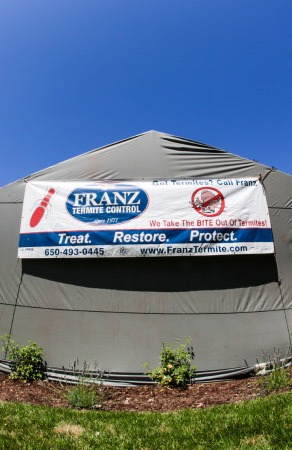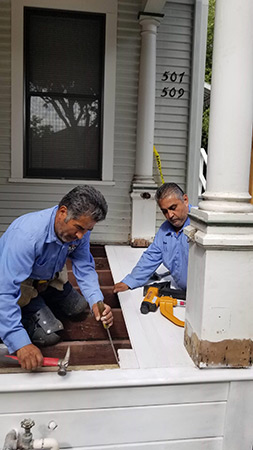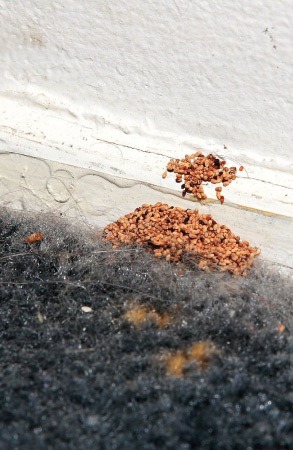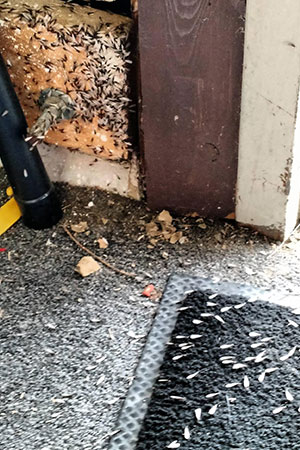After the Treatment – Damage Repair
Once we’ve exterminated all of your termites, we will also repair the damage done by the pests.
If caught early enough, damage will be minimal, requiring little to no repair.
If the problem was more extensive, however, repairs can, likewise, be more extensive; in some extreme cases, expensive repair is required.
Read more about termite damage repair
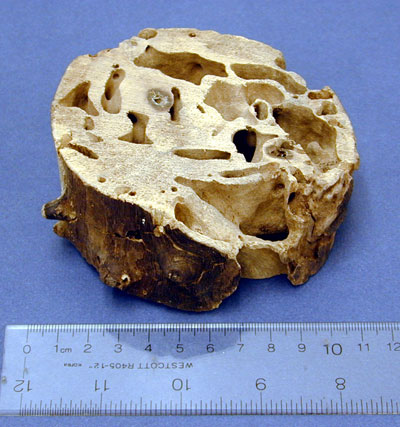
Drywood Termite Damage
(Image: University of Arizona – Entomology)
Bottom line: if you want to keep termites from significantly damaging your home, you need to act quickly at the first sign of their presence.
More about Drywood Termites
Drywood termites are found in coastal regions, particularly warm climates that don’t have harsh, freezing temperatures. The conditions in Santa Clara and San Mateo counties, the counties we service, are ideal for them to thrive.

Drywood Termite Workers (Left) and Soldiers
(Right) (Image: University of Arizona – Entomology)
Identifying Drywood Termites
These termites are larger than their Northern California relatives, the subterranean termites. They can reach up to 1/2 inch long for reproductive groups and a bit shorter, around 3/8 inches, for the termite soldiers.
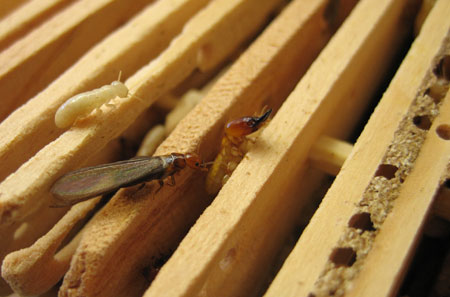
Drywood Termites (left to right): worker, reproductive (swarmer), soldier
(Image: University of Arizona – Entomology)
They are cylindrically shaped, with 6 legs and a light brown color. If the termites are swarming, they will have 4 equal sized wings that continue beyond the body.
During this swarming phase, they mate and find new areas to form new colonies. The colony size slowly grows into maturity. Drywood termites swarm in August and September, usually during very warm weather.
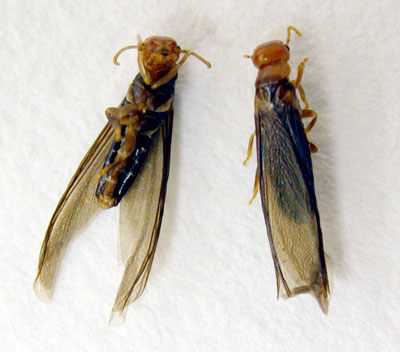
Drywood Termite Swarmers
(Image: University of Arizona – Entomology)
Drywood termite swarmers will shed their wings, so dead swarmers will most frequently be found with discarded wings. This is in contrast to subterranean termite swarmers which will often be found with the wings still attached.
The drywood termite swarmers, upon leaving their original colony, will attempt to immediately find sound, dry wood to form a new colony. They will enter the new wooden structure through cracks, natural checks, overlapping or adjoining pieces and exposed grain at the end of the member.
A new colony of drywood termites will develop relatively slowly when compared to other termite species.
Drywood termite colonies will continue to increase in size, so it’s important to take measures to control them and remove or minimize potential future colony homes.
Contact Franz Termite Control for a termite inspection report and for professional help and recommendations for your particular home.

